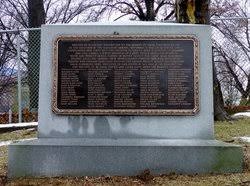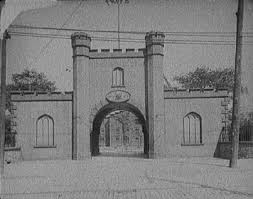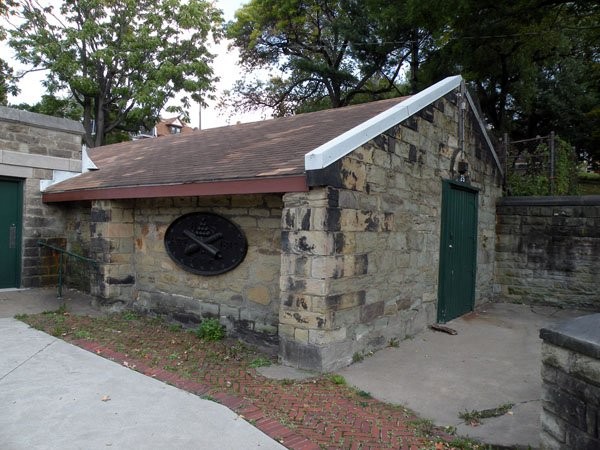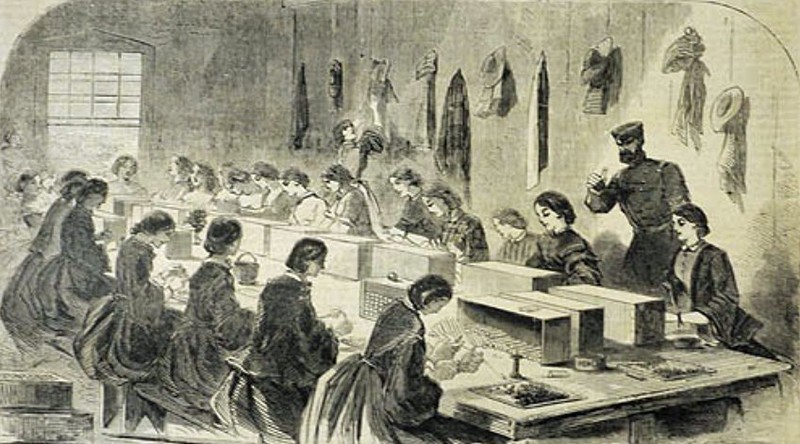Allegheny Arsenal Monument, Allegheny Cemetery
Introduction
Text-to-speech Audio
Images
Allegheny Arsenal Monument is located in Allegheny Cemetery

Allegheny Arsenal Building

Nearby Arsenal Park includes the Allegheny Arsenal Powder Magazine which survived the blast and fire. It was built in 1814.

A depiction of work being done in a similar arsenal in Massachusetts, published July 1861, Harper's Weekly,

Backstory and Context
Text-to-speech Audio
On a warm afternoon in September, 156 women who might be considered "Rosies" a century later worked to build munitions at the Allegheny Arsenal in the Lawrenceville neighborhood of Pittsburgh. Inside a single frame building that served as the arsenal's laboratory, women as young as fifteen used their hands to roll, pinch, and tie rifle cartridges filled with bullets and Black powder. The women, along with several boys, crafted over a hundred thousand cartridges per day in a facility that stretched from Penn Avenue to the Allegheny River. Many of the workers were Irish immigrants who were valued by their willingness to work long hours for little pay at a time when manpower was in short supply.
At approximately 2 pm On September 17, Joseph Frick was delivering barrels of Dupont gun powder in a horse-drawn carriage up a new stone road. Arsenal employee Rachel Dunlap reported seeing a spark flash that may have come from the ironclad shoes of the horse or the iron wagon wheels. The next thing she reported seeing was a sheet of flame. Three explosions followed, quickly demolishing the laboratory and the bodies of those in the blast zone. Workers ran from the flames and the air smelled of acrid odors of sulphur and burnt flesh. 78 people perished in the disaster.
The former arsenal is now home to a cemetery with a marble obelisk been dedicated to the victims. The original monument was dedicated in 1863 but succumbed to the elements over time. In 1928, the monument was refurbished and lists the names of the 43 women and 2 men who are buried in the cemetery. The text on the monument reads “a sacrifice to freedom and civil liberty.”
Cite This Entry
Trowbridge, David J. and Kyle Lowers. "Allegheny Arsenal Monument, Allegheny Cemetery." Clio: Your Guide to History. March 7, 2019. Accessed March 29, 2025. https://theclio.com/entry/75331
Sources
Pitz, Marylynne. Allegheny Arsenal Explosion: Pittsburgh's Worst Day During the Civi War. September 16, 2012. . http://old.post-gazette.com/pg/12260/1261858-51.stm#ixzz26kXU7l9t.
. . https://en.wikipedia.org/wiki/Allegheny_Arsenal.

